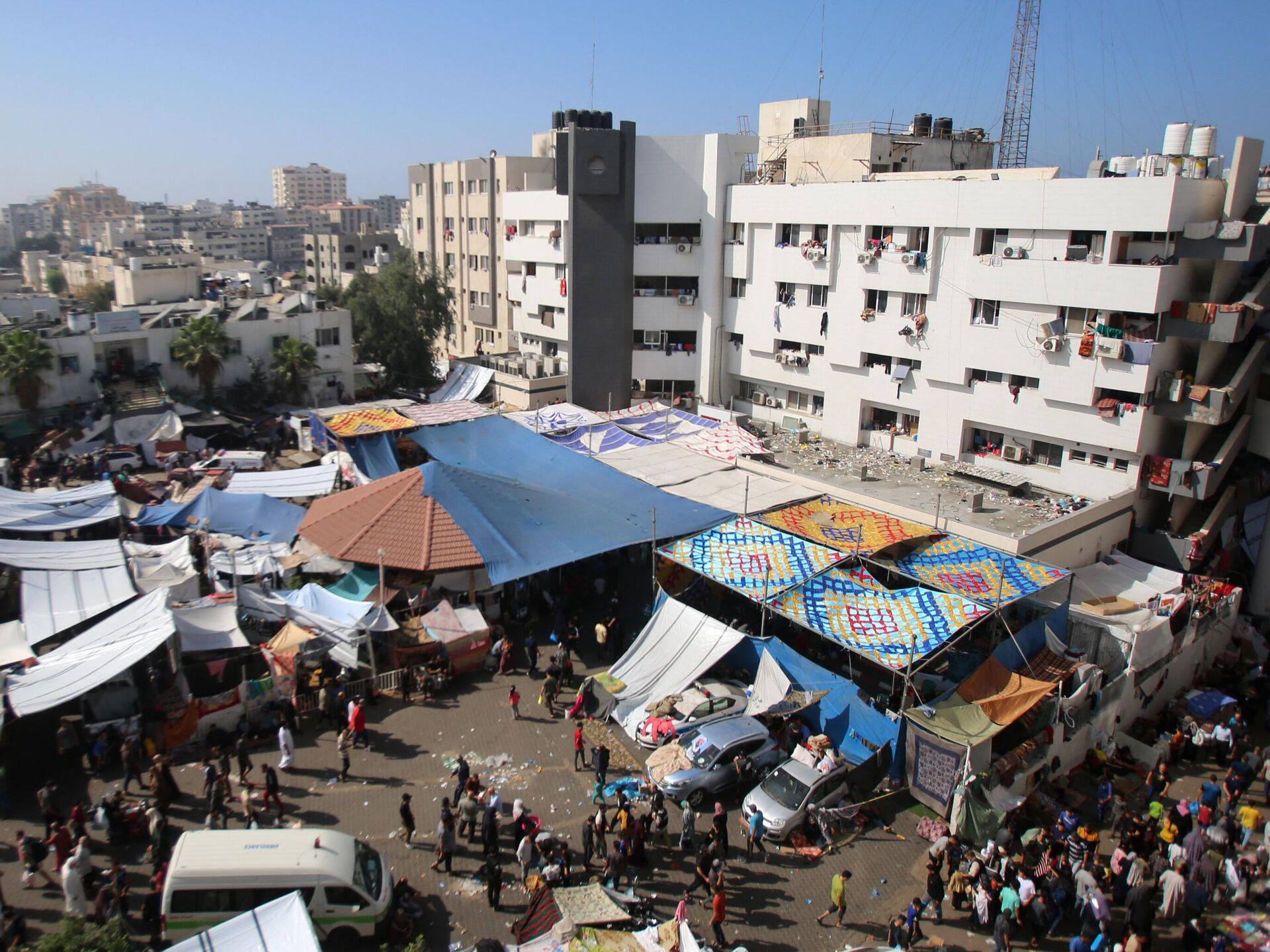Al Shifa Hospital in Gaza Halts Operations Amid Ongoing Conflict
World Health Organization Announces Critical State of Gaza’s Largest Hospital
The dire situation in the Gaza Strip has reached a critical point with the Al Shifa hospital, Gaza’s largest health facility, no longer able to function. This alarming development was announced by Tedros Adhanom, the director of the World Health Organization (WHO).
Desperate Pleas for Patient Evacuation
According to the WHO Director, a high-risk assessment mission revealed the collapse of essential services at Al Shifa hospital. The medical facility suffers from severe shortages, including no water, food, electricity, or fuel, coupled with depleted medicine supplies. The function of the hospital has been paralyzed, prompting urgent calls for assistance to evacuate over 300 individuals, comprising medical staff and patients, among whom are 32 infants.
Forthcoming Evacuation Missions
With the hospital’s incapacity to provide medical care, the WHO has plans underway to organize missions within the following three days to evacuate those stranded within the deteriorating conditions of Al Shifa.
Military Utilization of Medical Facilities: A Controversial Issue
The Pentagon’s Deputy Press Secretary, Sabrina Singh, revealed US intelligence reports alleging the military use of hospitals in Gaza, including Al Shifa, by Hamas and Palestinian Islamic Jihad. Following these reports, the Israel Defense Forces (IDF) asserted they had conducted a targeted operation within the Al Shifa hospital complex, during which they reportedly found a Hamas command center along with infrastructure and weapons.
The Escalating Conflict Between Israel and Hamas
The conflict intensified on October 7 when Hamas launched an immense rocket assault on Israeli territory from Gaza. Israeli Prime Minister Netanyahu stated that Israel is “at war,” prompting the mobilization of 360,000 reserve soldiers and the initiation of a series of intense airstrikes. Israeli forces later entered Gaza with the stated aim of dismantling Hamas infrastructure and rescuing hostages.
However, these military operations have since led to many civilian casualties, including children, and have struck numerous locations such as hospitals, press offices, and educational establishments used as shelters.
International Call for Ceasefire and Diplomatic Turmoil
The heavy toll of civilian lives and destruction has sparked widespread international outrage and calls for an immediate ceasefire from several countries and global citizens. The UN Secretary-General, Antonio Guterres, has also joined these voices, demanding an end to the violence. Nations like Bolivia, Chile, Peru, Colombia, Honduras, and Brazil have gone so far as to rethink their diplomatic ties with Israel.
A Humanitarian Crisis Unfolding
Since October 9th, Israel has blocked the basic provisions to the Gaza Strip, driving hundreds of thousands of civilians to relocate to the southern part of the enclave. Humanitarian aid trickles through the Rafah crossing point at the Egyptian border, but it is hardly sufficient for the needs of the displaced population.
Quest for Peace: A Two-State Solution?
The international community continues to advocate for a ceasefire and urges a two-state solution as the only viable path toward enduring peace in the region. To date, the violence has led to approximately 1,200 deaths and nearly 5,500 injuries in Israel and a staggering 12,000 deaths with over 29,000 injuries in Gaza.
The ongoing conflict in Gaza paints a bleak picture of suffering and devastation, raising urgent questions about the fate of countless lives caught in the crossfire and the prospects for peace in the troubled region.

This article uses data and information obtained from Sputnik World, which holds all copyrights for the content and images provided.
Please note that the facts and figures presented in this article are based on the latest available information and news reports as of the knowledge cutoff date. The situation may have evolved or changed since that time.